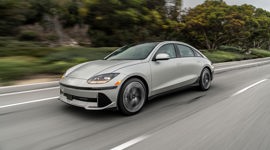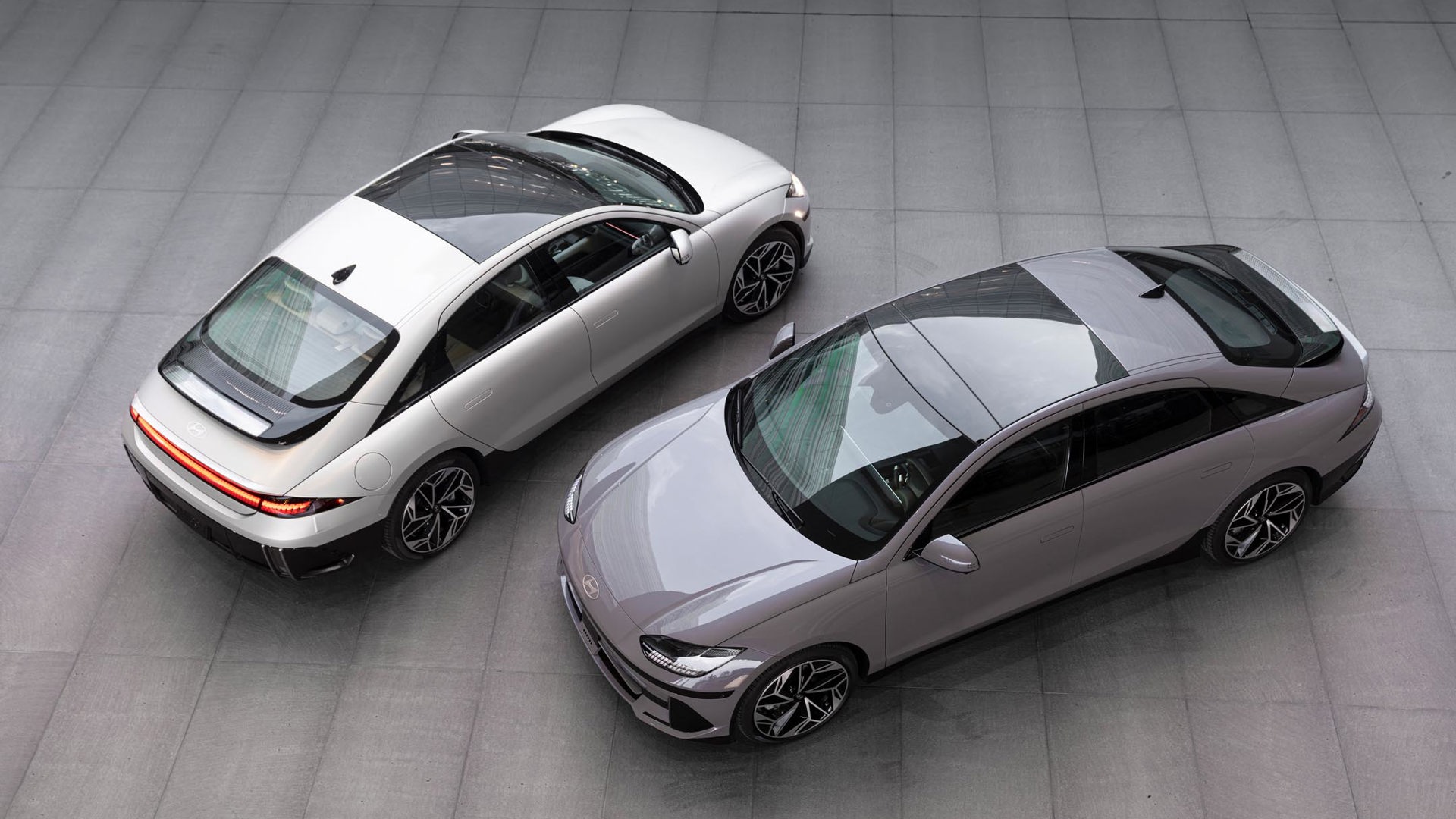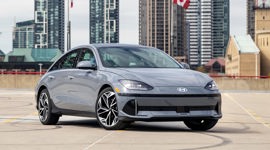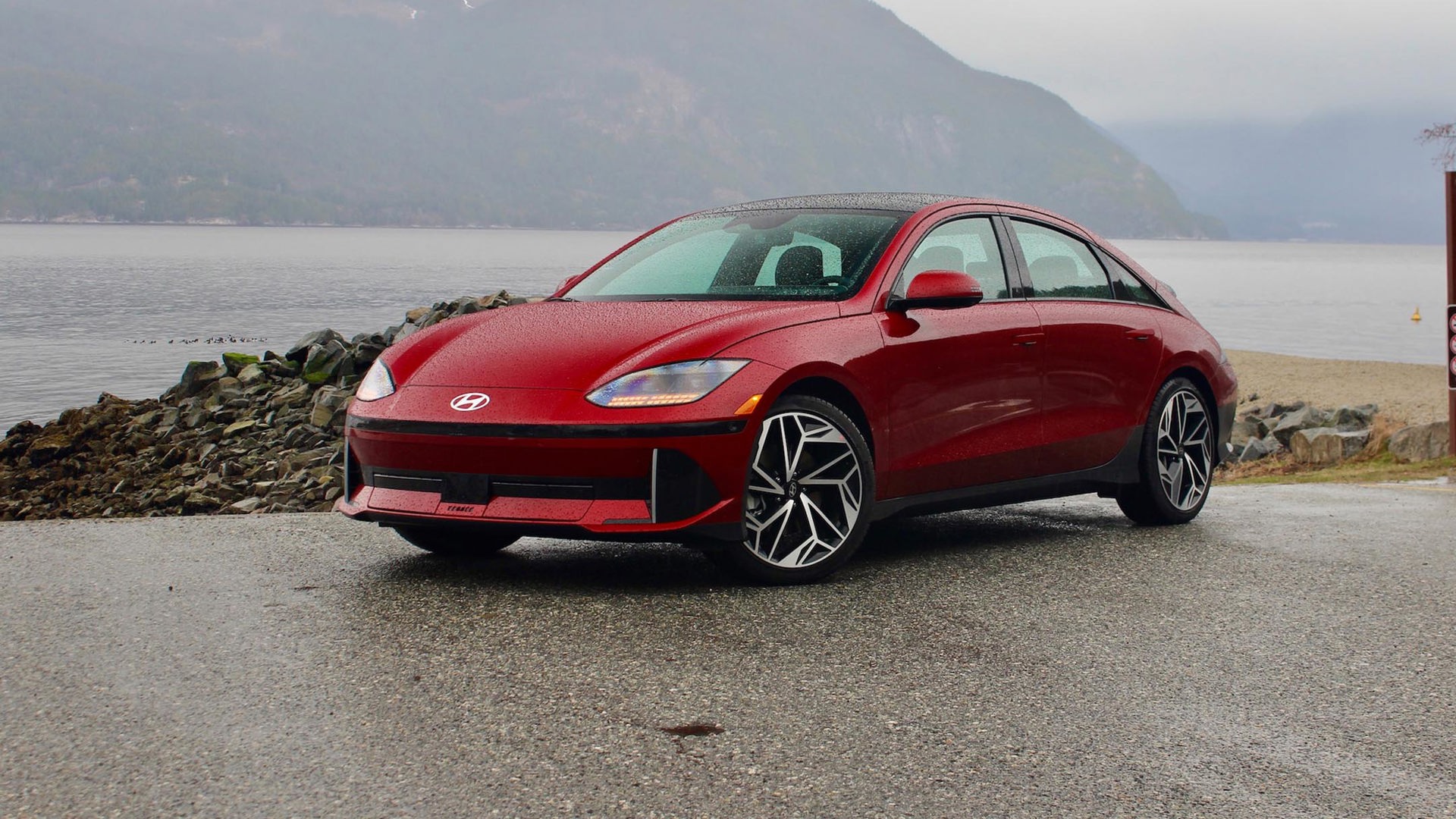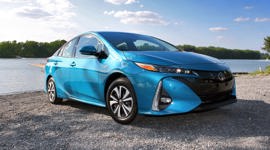Making its North American debut at the Los Angeles auto show, the 2023 Hyundai Ioniq 6 blends form and function in a distinctly all-electric package.
First shown this summer in Korea, the sleek sedan shares its core components with the Ioniq 5 hatchback but eschews that car’s retro-inspired styling for a look built entirely on its ability to smoothly slip through the air. In fact, at 0.22 its drag coefficient is the lowest ever for a Hyundai product. That’s slightly lower than the similarly sized Tesla Model 3 (0.23) and the recently redesigned Toyota Prius (0.26).
That aerodynamic efficiency was achieved not just through the sedan’s shape but through the use of active shutters and what the brand calls “wheel gap reducers” – small plastic flares at the front of the wheel arches – that combine to create a wider air curtain around the car. Along with other aerodynamic goodies, including a spoiler that looks a bit like it was borrowed from the Porsche 911 parts bin, and the 77.4-kWh battery pack is good for a claimed 547 km of range in a rear-wheel drive layout or 499 km with the dual-motor all-wheel drive setup. Official numbers could differ, and will be released closer to launch.
Beyond the battery, platform, and electric motors, the Ioniq 6 also shares its five-door sibling’s high-voltage architecture. The 800-volt capability means the battery pack can be topped up from 10 to 80 per cent in just 18 minutes when hooked up to a 350-kW DC fast-charger, according to the automaker. To help achieve that optimal charging, the Ioniq 6 employs a new battery pre-conditioning system that’s automatically enabled when a charging station is entered into the navigation system. Porsche uses a similar system in its Taycan line of EVs, which also utilize 800-volt architecture.
Other ways in which this electric vehicle (EV) stands out from its compatriot products in the Hyundai portfolio include the brand’s first implementation of over-the-air (OTA) updates. According to Hyundai, beyond the software for features like maps and multimedia, the OTA functionality can wirelessly update the firmware that runs drive-related systems like the powertrain’s control module.
While the powertrain features the same output as the Ioniq 5 with the same battery – 225 hp and 258 lb-ft of torque for the single-motor setup; 320 hp and 446 lb-ft of torque for the dual-motor – this new sedan features eco, comfort, snow, and sport drive modes, as well as a customizable setting that allows motor output, steering effort, and accelerator sensitivity to be adjusted independently. Even all-wheel drive torque split can be tweaked, according to the automaker.
For better or worse, the styling is what stands out most here thanks to the quirky exterior, but there are subtle nods towards the Ioniq 5. Take the pixel lights front and rear, including the third brake light that integrated with the spoiler. Likewise, some interior components have been ported over, including the twin digital displays that span the dash. The central 12.3-inch screen is touch-responsive, while the one in front of the driver is static and is used in place of traditional instruments.
The haptic climate control panel is the same, too, but the rest of the cabin is unique to the Ioniq 6 – although there’s the same sense of openness thanks to the dedicated EV platform both cars are built on. In the case of this sedan, the wheelbase spans 2,950 mm (116.1 in), so barely shorter than the hatchback’s, with the ability to easily enter and exit the car and great sightlines thanks to the way the hood sits below the cowl line.
Expect pricing information to be released closer to the car’s spring 2023 on-sale date.
